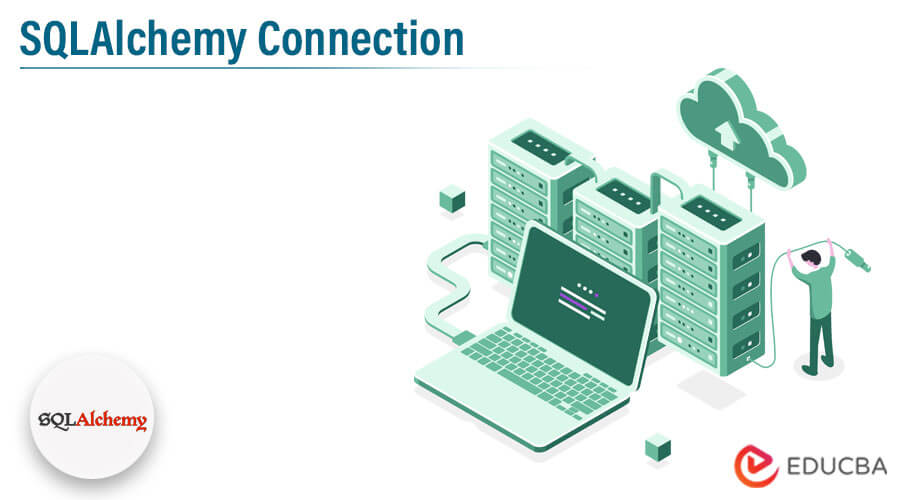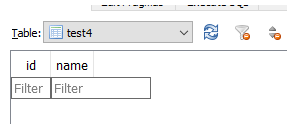Updated March 16, 2023

Introduction to SQLAlchemy Connection
The Sqlalchemy connection is one of the objects for creating the database connection using the engine.connect() method, which returns as the connection object. Also, it is related and coordinates with the other connection-related entities. It is not too important that the SQLAlchemy ORM will generally access the things through the session object with the database interface and the other textual sql statements live expressions on the ORM higher-level management services.
What is the SQLAlchemy connection?
The Sqlalchemy connection is the library that can mainly interact with various databases. It enabled the data models and queries with the python classes and the statements. We can use the create_engine() method for the sqlalchemy library for connecting the URL and returning with the sqlalchemy engine referenced with both dialect and the Pool, which interpret along with the DBAPI’s module function with different behavior of the databases. We have successfully created the database connection for the databases like MySQL, Postgresql, Microsoft SQL, etc. The local instance of the database is designed for the sql databases and dialect with the drivers for establishing the connection.
How to use SQLAlchemy connection?
The sqlalchemy engine is created via the create_engine() method, and its call through the typical usage for the specific database URL through globally spent with the single server application process. A single-engine that manages the many individual DBAPI connections with the process is mainly intended to be the concurrent process. The engine is not synonymous with the DBAPI connect method. This function represents the database engine connection resource and efficiently creates the application module for every object or function call. It also uses a multi-tasking application. The process uses the basic system called for the python module like the multiprocessing module, and is usually required for the different engines along with the child process.
We can maintain the engine via the reference for the connection pool that ultimately references the DBAPI connections that tend to be portable across boundaries. An engine is configured to the polling achieved via the NullPool that matches the requirement. If the connection is the instance type, then the proxy object is mainly called for the actual DBAPI connection. It provides a largely compatible interface and the DBAPI cursor; the resulting proxy is used to connect the database drivers for the table rows and columns. The sqlalchemy engine connection has been established with the databases; it may be PostgreSQL, MySQL, SQLite, etc.
Here I have used SQLite database to create the engine and session to access the user data from the backend to UI.
SqlAlchemy connection Usage
A database like PyMySQL is the Python library that can be used to connect the MySQL database or other db servers that are already installed command like Pip install using pymysql command can be used to set it up environment. Because of the new way, the forma fields like passwords column can be worked on the previous form of the database like MySQL version 4.1, which is supported on the SQLAlchemy library that requires MySQL version 4.1 or higher version. Then additionally, if we need the statement type that can only be available with a specific version of MySQL, Oracle, or SQLite. The SQLAlchemy library does not give the proper way to use those statements on the database like MySQL and other database versions. In contrast, the statement isn’t available on the Result set. A proper validation rule should consult with the database documentation if a component or function in the SQLAlchemy does not appear in the work environment.
We can also set the pool_recycle value to create the database engine with the specified drivers. The database server name, user name, and password credentials for helping to connect the connections are saved in the history under the cookies datas. The log datas are performed by the user actions processed by the database engine that satisfies the sql statements and their parameters; the default values are set as a false condition. Then during the database connection, the connection string is encoded using the sqlalchemy techniques and concepts. The default format is UTF-8, and the DBAPIs support encoding the type in the backend database.
The general workflow of the sqlalchemy connection is the above diagram for calling the connect() method in the engine that shares the datas to the POOL and Dialect memory along with the DBAPIs database.
Examples of SQLAlchemy Connection
Different examples are mentioned below:
Example #1
import sqlalchemy as sa
from sqlalchemy.sql import select
import datetime
metadata = sa.MetaData('sqlite:///Mar9.db', echo = True)
print(“Connection Successfully”)
varss = sa.Table('test3', metadata,
sa.Column('id', sa.types.Integer, primary_key=True),
sa.Column('date', sa.types.DateTime(timezone=True), default=datetime.datetime.utcnow)
)
metadata.create_all()
engs = metadata.bind
today_dt = date.today()
dtr_log = DailyTimeRecord.query.filter(
func.date(DailyTimeRecord.time_in_am)==today_dt,
DailyTimeRecord.staff_id==staff.id
).first()
cnnection = engs.cnnectionect()
outss = cnnection.execute(varss.insert().values(id=1))
s = select([varss])
outss = cnnection.execute(s)
row = outss.fetchone()Sample Output:
We have created the above example with the following steps.
- First, we must import the sqlalchemy libraries like import sqlalchemy, datetime, etc.
- Based on the concepts and requirements, we have to import the libraries.
- Next, we import and set the database in the Metadata classes.
- metadata = sa.MetaData(‘sqlite:///Mar9.db’, echo = True)
- We created the table in the specific database called Mar9.db
- With the help of the instance, we can call and create the table columns like id, date, etc.
- The data type of the id should be the integer, and the date should be the datetime type.
- The engine is called with the help of variables and executes the default methods like execute(), insert(), etc.
- Insert() method is used to insert the values in the table
- Execute() method helps execute the query in the table result set.
Example #2
from sqlalchemy import create_engine
from sqlalchemy.ext.declarative import declarative_base
from sqlalchemy.orm import sessionmaker
engine = create_engine('sqlite:///D:/Mar9.db')
Session = sessionmaker(bind=engine)
print("Connection successfully")
Base = declarative_base()
class clsfrdst(Base):
__tablename__ = 'test4'
id = Column(Integer, primary_key = True)
name = Column(String)
class scclss(Base):
__tablename__ = 'secndtble'
id = Column(Integer, primary_key = True)
invid = Column(Integer, ForeignKey('test5.id'))
fts = relationship("clsfrdst", back_populates = "secndtble")
clsfrdst.secndtble = relationship("scclss", order_by = scclss.id, back_populates = "fts")
Base.metadata.create_all(engine)Sample Output:
- The above examples we used to create the database engine connections first
- And then, we created the databases and their tables using the python classes.
- Which has already been imported on the sqlalchemy functions and its libraries
- We created the table columns like id as the integer attribute and acted as the primary key to perform the unique operations in the backend.
- The other column, like invid, also an integer, acts as the Foreign key to fetch the table data from the previous table reference.
- Here we can perform the database relationship from one table to another table data by using the primary key and foreign key concepts.
- The metadata references hold all other tables, especially the classes that contain the DBAPIs relationship for more than one table.
Conclusion
The database engine connections are the most important way to perform the user operations from the UI view to the backend. Here is the sqlalchemy python-based library that can be supported to create the database tables with required columns and perform the user operations, which depends on the project requirements.
Recommended Articles
This is a guide to SQLAlchemy Connection. Here we discuss the Introduction, What is, and how to use SQLAlchemy connection with Examples and code implementation. You may also have a look at the following articles to learn more –





